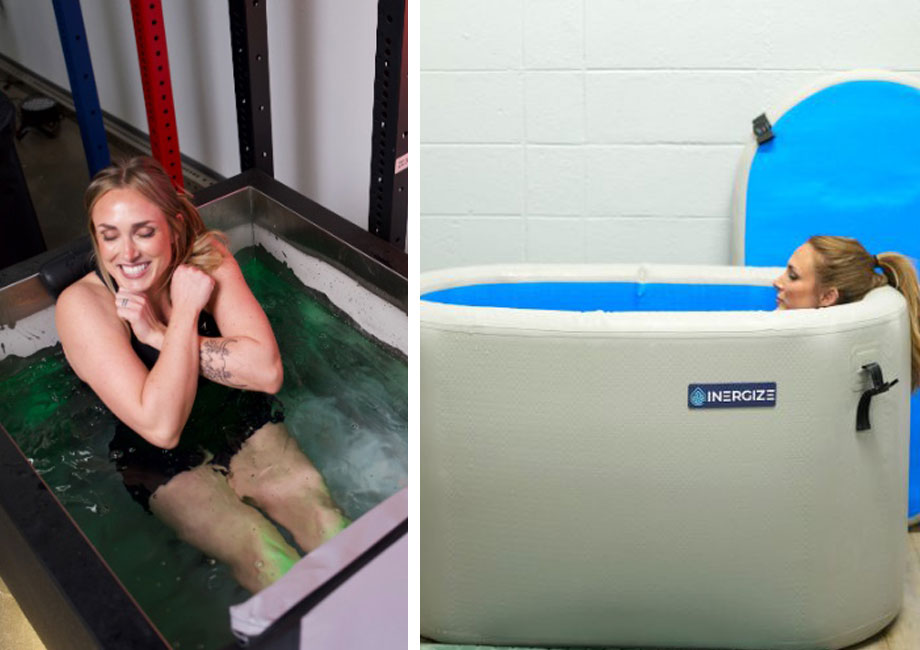We test and review fitness products based on an independent, multi-point methodology. If you use our links to purchase something, we may earn a commission. Read our disclosures.
Imagine plunging into an icy bath after a grueling workout, feeling the cold water envelope your body and shock your system awake. Now, picture sinking into a hot tub, warm bubbles easing your sore muscles and melting away your daily stress. Both recovery experiences offer unique health benefits, but which one is right for you?
Whether you’re an athlete seeking faster recovery or looking to unwind after a stressful day, understanding how the best cold plunges and hot tubs work can be a game-changer. As a certified personal trainer (CPT) and longtime rugby player—who’s experimented with everything from cold showers to saunas—I’m always looking for ways to keep my mind and body in optimal shape.
RELATED: How To Cold Plunge
So, to help settle the cold plunge vs. hot tub debate, I’ll delve into their research-backed benefits, explain how to use them safely and cover the criteria you should consider when deciding whether to purchase a cold plunge or hot tub for your home.
By the time your body temperature gets back to normal, you’ll have a clear idea of which option fits best into your wellness routine.
Medical disclaimer: This article is intended for educational and informational purposes only. It is not intended as a substitute for medical advice. For health advice, contact a licensed healthcare provider.
Quick Look: Cold Plunge Vs Hot Tub
Cold plunges use ice-cold water to reduce inflammation and speed up muscle recovery, making them ideal for athletes and fitness enthusiasts. On the other hand, hot tubs use warm water to relax your muscles and alleviate stress, providing a soothing retreat for anyone seeking relaxation. Both have unique advantages, catering to different needs for recovery and well-being.
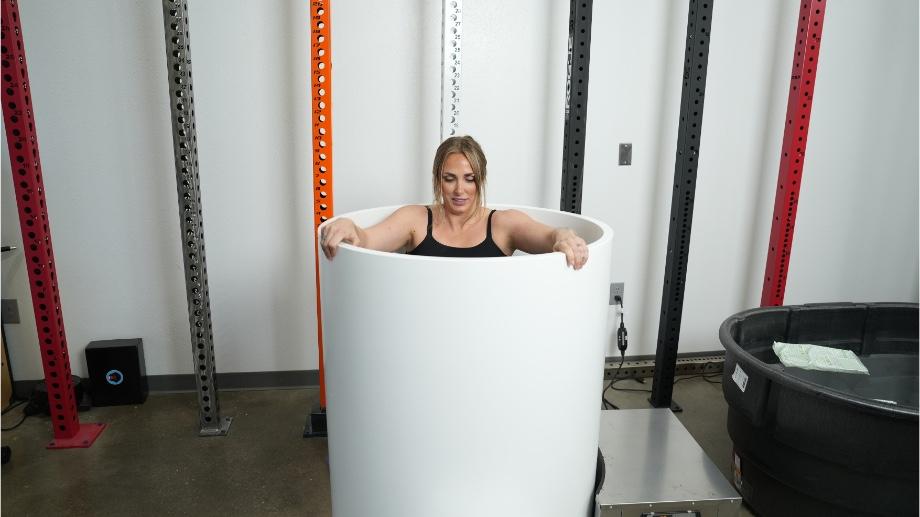
Who Should Use a Cold Plunge
- Athletes looking to speed up muscle recovery: The cold temperature helps reduce muscle soreness and inflammation1, making it ideal for post-workout recovery.
- Individuals seeking to boost their immune system: Cold plunges can stimulate the immune system2, increasing white blood cell production.
- Those looking for a mental health boost: The invigorating nature of cold water immersion can improve mood3 and reduce anxiety.
RELATED: Best Muscle Recovery Tools
Who Should Use a Hot Tub
- Individuals dealing with chronic muscle pain: The warm water also helps soothe sore muscles and joints1, which can help provide relief from chronic pain conditions like arthritis.
- People looking to improve sleep quality: Hot tubs are ideal for unwinding after a long day, putting you in a more relaxed state for a better night’s sleep.
- Anyone seeking overall relaxation and mental well-being: Warm water and massaging jets create a relaxing experience that can benefit your mental health.
Cold Plunge Vs Hot Tub: What Are They?
Before breaking down the key similarities and differences between these two popular pieces of recovery equipment, let’s give a quick overview of how each one works.
What Is a Cold Plunge and How Does It Work?
A cold plunge involves immersing your body in ice-cold water, typically between 53 to 60 degrees Fahrenheit. This practice has ancient roots, dating back to Roman baths and Scandinavian traditions. Modern cold plunge setups include tubs or specially designed pools that maintain low water temperatures for therapeutic use.
RELATED: DIY Cold Plunge Ideas
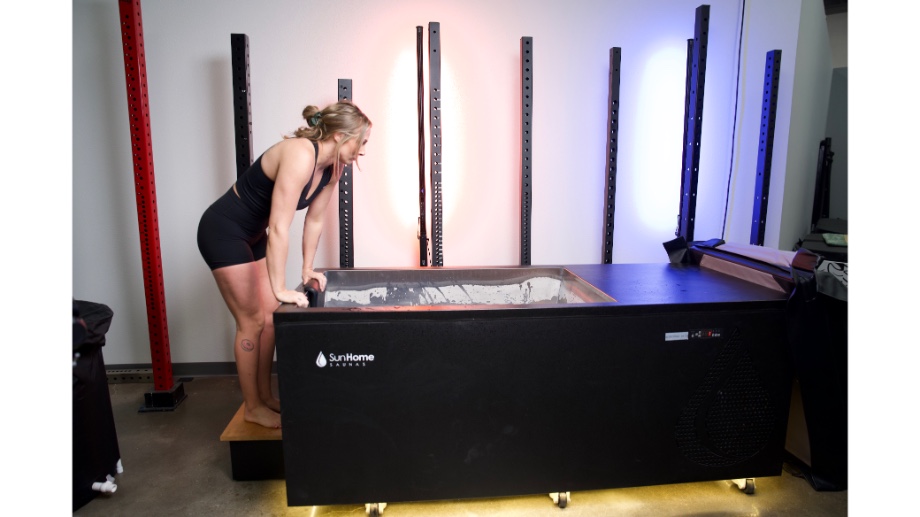
Cold water therapy works by constricting blood vessels, which helps reduce inflammation and muscle soreness. The cold temperature triggers a rush of blood to the core, improving circulation and aiding in recovery. Sessions usually last between five to 15 minutes, depending on individual tolerance and specific goals.
What Is a Hot Tub and How Does It Work?
A hot tub is a large tub filled with warm water, typically maintained between 100 to 104 degrees Fahrenheit. Hot tubs have been used for centuries for relaxation and therapeutic purposes. Modern hot tubs typically have jets—or other high-tech features like built-in speakers and various controls—that provide a massaging effect.
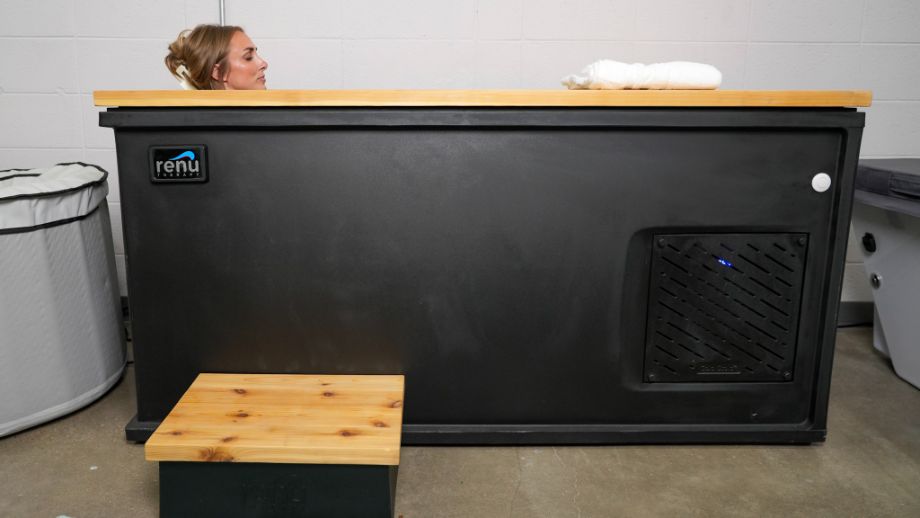
Hot water immersion dilates your blood vessels, which helps improve blood flow and reduce muscle tension. The heat helps ease your muscles and joints, as the pain relief provided helps promote relaxation. Hot tub sessions usually last between 15 to 30 minutes.
Benefits of Cold Plunges
Why would anyone subject themself to spending time in a tub of freezing water? Here’s why you shouldn’t knock the idea of a cold plunge before you try it.
Helps with Muscle Recovery
Cold plunges are particularly effective for muscle recovery and soreness relief. The cold temperature reduces inflammation and numbs the nerves, providing immediate pain relief.
This can be especially beneficial after intense workouts, as it helps flush out metabolic waste products from the muscles, speeding up the healing process.
According to a 2022 study published by Sports Medicine4, researchers found that submerging in cold water after high-intensity workouts was more effective in reducing muscle soreness than after hypertrophy and bodybuilding-style workouts.
RELATED: Cold Plunge Before Or After Workout
Helps Improve Blood Circulation
Cold plunges stimulate blood flow by causing blood vessels to constrict and then dilate. This process, known as vasoconstriction and vasodilation5, enhances blood circulation and helps deliver oxygen and nutrients to tissues more efficiently. Improved circulation can also contribute to better cardiovascular health and reduced risk of blood pressure-related issues.
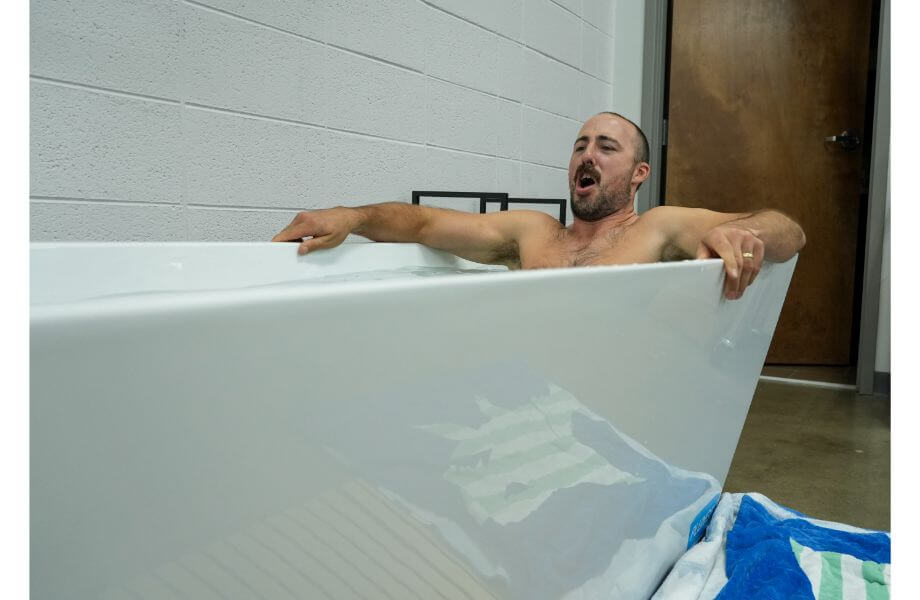
Supports Your Mental Health and Well-Being
Immersing in cold water triggers the release of endorphins6, which are natural mood enhancers. This can help reduce stress and improve mental well-being. Regular exposure to cold water has been linked to lower levels of anxiety and depression. The invigorating nature of cold plunges also provides a mental boost, leaving you feeling refreshed and energized.
RELATED: Exercise And Mental Health
Can Boost Your Immune System
Exposure to cold water has been found to activate the immune system2, increasing the production of white blood cells and enhancing overall immune function. This can help your body better fend off illnesses and infections.
Benefits of Hot Tubs
How can a tub of hot water benefit your body (and brain)? Here are some of the rewards you can reap from taking a seat and cranking up the heat.
Supports Muscle Relaxation and Pain Relief
Hot tubs are highly effective in relieving muscle tension and reducing pain from conditions like arthritis. The warm water and massaging jets help soothe sore muscles and joints, making hot tubs an excellent choice for those dealing with chronic pain. The heat increases blood flow to affected areas, promoting healing and reducing discomfort.
RELATED: Best Bath Soak for Sore Muscles
Improves Blood Circulation
The heat from the hot tub dilates blood vessels7, increasing blood flow and promoting cardiovascular health, which can help lower blood pressure and improve overall circulation. Increased blood flow ensures that oxygen and nutrients are efficiently delivered to tissues, aiding recovery and maintaining healthy blood vessels.
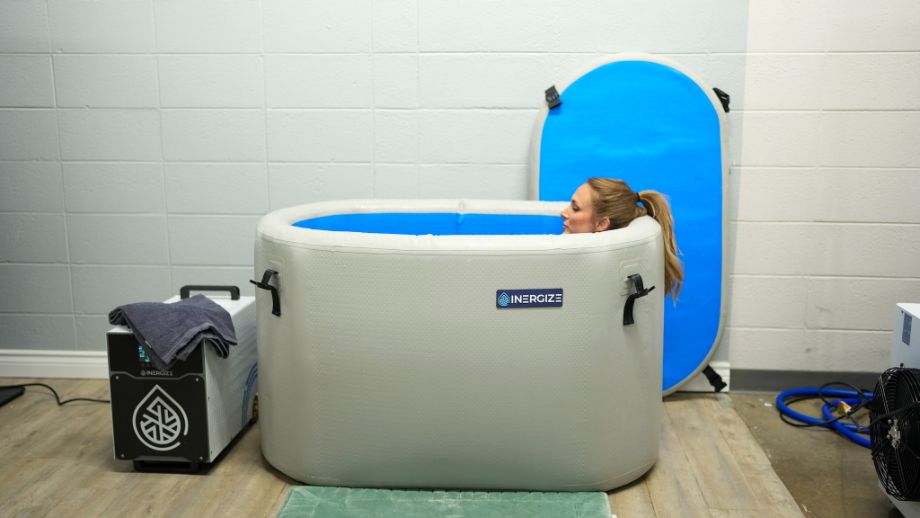
Supports Stress Relief and Better Sleep Quality
Hot tubs are known for their stress-relieving benefits. The warm water helps relax the body and mind, which can help improve sleep quality and reduce stress levels. Immersing in a hot tub before bedtime can help ease physical tension, give you some time to unwind, and contribute to your overall well-being.
Supports Your Nervous System
Warm water immersion can stimulate the release of endorphins8, providing natural pain relief and enhancing overall well-being. The soothing effect of hot water on the nervous system helps reduce stress and anxiety, creating a sense of calm and relaxation.
Key Similarities Between a Cold Plunge and Hot Tub
Despite their contrasting temperatures, cold plunges and hot tubs share several similarities that make them popular choices for recovery and relaxation. Here are some key aspects that both therapies have in common:
Both Help Enhance Blood Circulation
Both cold plunges and hot tubs improve blood circulation. Cold water immersion triggers vasoconstriction and subsequent vasodilation, while warm water causes blood vessels to dilate, enhancing blood flow throughout the body. Improved circulation aids in nutrient delivery and waste removal, contributing to your overall cardiovascular health.
Both Aid Muscle Recovery
Whether you choose the chill of a cold plunge tub or the warmth of a hot tub, both can significantly aid muscle recovery. Cold plunges reduce inflammation and muscle soreness post-exercise, while hot tubs help relax tight muscles and alleviate pain from overuse or injury.
RELATED: What Is Active Recovery?
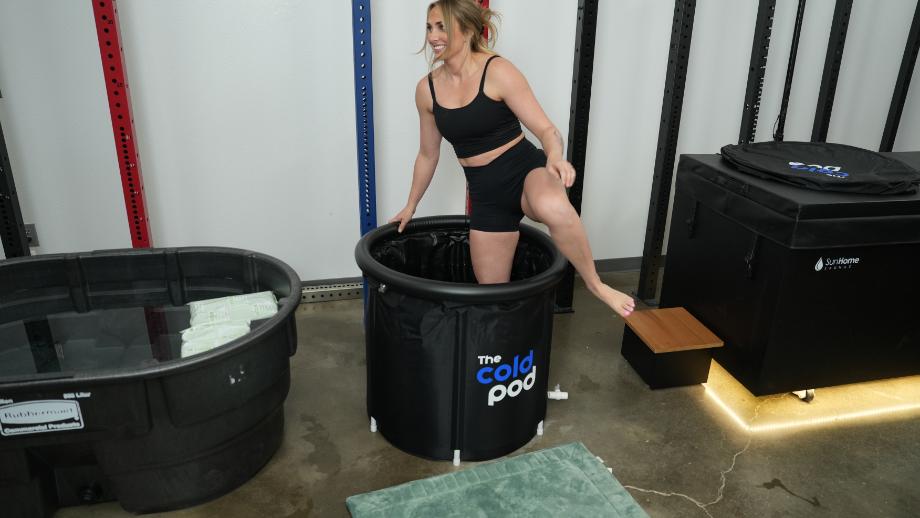
Both Help Promote Mental Well-Being
Immersing yourself in a cold plunge or a hot tub can boost mental well-being. Cold water immersion triggers the release of endorphins, which can enhance mood and reduce stress. Similarly, the soothing effects of warm water help decrease stress levels and promote relaxation.
Both May Help Boost Your Immune System
Both therapies have been linked to immune system benefits. Cold plunges stimulate white blood cell production and enhance immune function, while the stress-relieving properties of hot tubs can improve overall immune response by reducing cortisol levels.
Important Differences Between a Cold Plunge And Hot Tub
While cold plunges and hot tubs share some common benefits, they differ significantly in their mechanisms, usage, and effects. Here are the primary differences to consider:
Temperature and Mechanism
The most obvious difference is the temperature. Cold plunges involve immersing yourself in ice-cold water, typically between 53 to 60 degrees Fahrenheit, constricting your blood vessels and reducing inflammation. In contrast, hot tubs use warm water, around 100 to 104 degrees Fahrenheit, to dilate your blood vessels and relax sore muscles.
RELATED: Ice Bath Benefits
Usage and Duration
Cold plunges are typically used for short durations, around five to 15 minutes, due to the intense cold. Hot tubs, on the other hand, are used for longer sessions, usually between 15 to 30 minutes, as the warmth is more tolerable and comforting for extended periods. Just don’t overdo it. Too long in a hot tub may result in dizziness, overheating, or even dehydration.
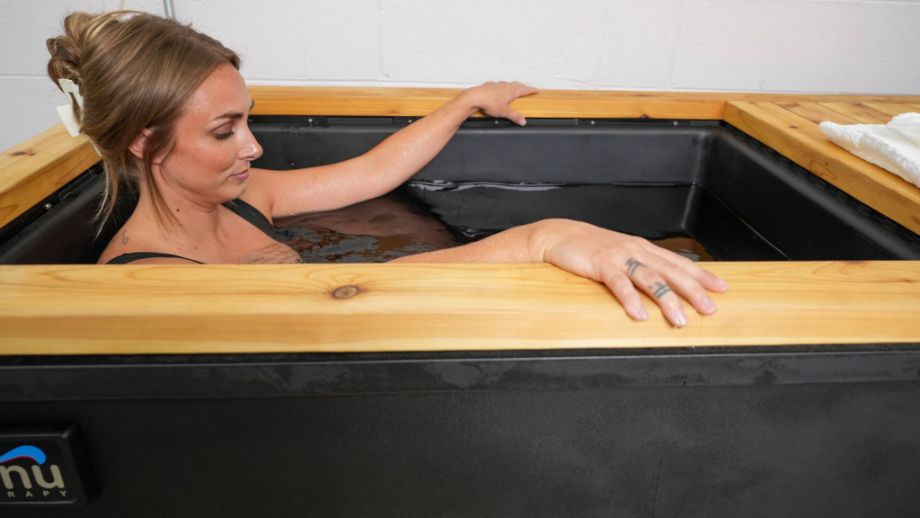
Cost and Maintenance
Cold plunge setups can be simpler and less costly, often just requiring a tub and access to ice or cold water. Of course, if you don’t want to set up your own ice bath, you can opt for a high-end model like The Cold Plunge (which costs almost $5,000) or a budget-friendly one like The Cold Pod, which only costs $200.
Hot tubs, however, tend to be more expensive and require regular maintenance, including water treatment and electrical upkeep, making them a more significant investment. Entry-level hot tubs cost around $3,000, with some models costing well over $20,000.
Health Impact and Focus
Cold plunges are particularly effective for reducing inflammation, boosting the immune system, and providing a quick mental and physical wake-up. Hot tubs focus more on relaxation, pain relief, and improving sleep quality by easing muscle tension and reducing stress.
How To Choose Between a Cold Plunge And Hot Tub
Choosing between a cold plunge and a hot tub depends on your specific health needs and personal preferences. Here are some factors to consider when making your decision:
Your Recovery Goals
Consider your primary recovery goals. If your focus is on reducing inflammation and speeding up muscle recovery after intense workouts, a cold plunge might be more beneficial. If you seek overall relaxation and relief from chronic pain or stress, a hot tub could be the better choice.
Budget
Your budget plays a crucial role in this decision. Cold plunges can be more affordable and require less maintenance, while hot tubs are a larger financial investment and come with ongoing maintenance costs. Assess your budget and long-term commitment before deciding.
Space and Setup
Evaluate the available space in your home or yard. Cold plunges generally require less space and a simpler setup, while hot tubs need more room and a stable foundation, along with electrical and water hookups. Make sure you have the necessary space and infrastructure for your choice.
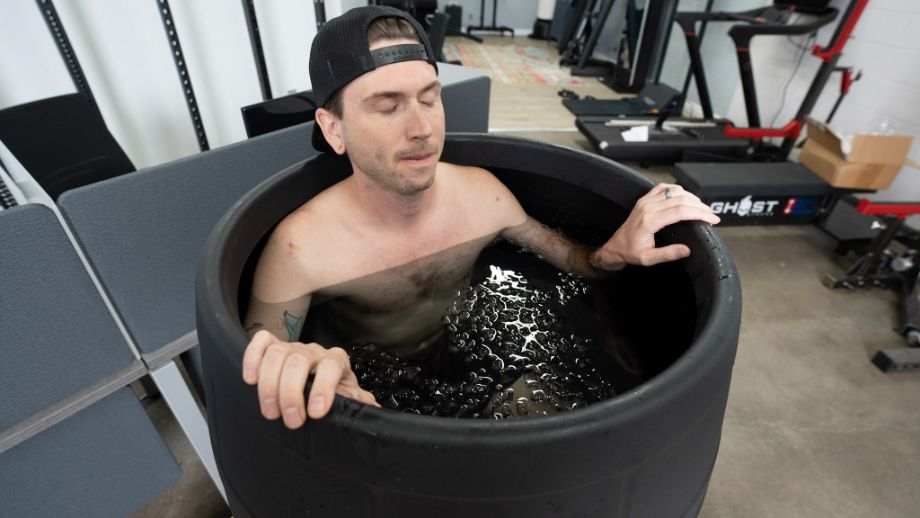
Personal Tolerance
Your tolerance to cold or heat should also guide your decision. Some people find cold plunges invigorating but too intense, while others may find hot tubs soothing but too warm for long periods. Consider your comfort levels with each form of immersion therapy.
Health Conditions
Lastly, take into account any existing medical conditions. Cold plunges can be risky for individuals with cardiovascular issues due to the shock of cold water. Hot tubs may not be suitable for those with certain skin conditions or heat sensitivity. Consult with a healthcare provider to ensure you’re making a safe choice.
Cold Plunge Vs Hot Tub: Final Thoughts
Whether you’re diving into the icy depths of a cold plunge or soaking in the steamy embrace of a hot tub, each therapy offers unique perks for your recovery routine. Feeling the burn after an intense workout? Cool down with a cold plunge to chill out those inflamed muscles. Stressed and tense? A hot tub can wash away your worries and warm up your recovery game.
So, take the plunge or soak it all in—your body will thank you either way.
Cold Plunge Vs Hot Tub: FAQs
Is a hot tub or cold plunge better for you?
It depends on your specific health goals. Cold plunges are great for muscle recovery, reducing inflammation, and boosting the immune system, while hot tubs are excellent for muscle relaxation, stress relief, and improving sleep quality.
Are there any negatives to cold plunge?
Yes, potential negatives include the risk of hypothermia, especially if done for too long, and the initial shock to the system, which can be uncomfortable. It’s important to follow safety guidelines and limit exposure time.
How long should you take an ice bath for?
An ice bath should typically last between five to 15 minutes. Exceeding this time can increase the risk of hypothermia and other cold-related issues.
What are the benefits of alternating between a hot tub and a cold plunge?
Alternating between a hot tub and a cold plunge, known as contrast therapy9, can enhance circulation, reduce muscle soreness, improve recovery times, and provide both relaxation and invigoration. Contrast therapy is considered safe, but you may want to consult with your doctor, especially if you have a heart condition, before attempting it.
References
- Petrofsky JS, Khowailed IA, Lee H, Berk L, Bains GS, Akerkar S, Shah J, Al-Dabbak F, Laymon MS. Cold Vs. Heat After Exercise-Is There a Clear Winner for Muscle Soreness. J Strength Cond Res. 2015 Nov;29(11):3245-52. doi: 10.1519/JSC.0000000000001127. PMID: 26502272.
- Janský, L., Pospísilová, D., Honzová, S., Ulicný, B., Srámek, P., Zeman, V., & Kamínková, J. (1996). Immune system of cold-exposed and cold-adapted humans. European journal of applied physiology and occupational physiology, 72(5-6), 445–450. https://doi.org/10.1007/BF00242274
- Yankouskaya, A., Williamson, R., Stacey, C., Totman, J. J., & Massey, H. (2023). Short-Term Head-Out Whole-Body Cold-Water Immersion Facilitates Positive Affect and Increases Interaction between Large-Scale Brain Networks. Biology, 12(2), 211. https://doi.org/10.3390/biology12020211
- Moore, E., Fuller, J.T., Buckley, J.D. et al. Impact of Cold-Water Immersion Compared with Passive Recovery Following a Single Bout of Strenuous Exercise on Athletic Performance in Physically Active Participants: A Systematic Review with Meta-analysis and Meta-regression. Sports Med 52, 1667–1688 (2022). https://doi.org/10.1007/s40279-022-01644-9
- Flouris, A. D., Westwood, D. A., Mekjavic, I. B., & Cheung, S. S. (2008). Effect of body temperature on cold induced vasodilation. European journal of applied physiology, 104(3), 491–499. https://doi.org/10.1007/s00421-008-0798-3
- Esperland, D., de Weerd, L., & Mercer, J. B. (2022). Health effects of voluntary exposure to cold water – a continuing subject of debate. International journal of circumpolar health, 81(1), 2111789. https://doi.org/10.1080/22423982.2022.2111789
- An, J., Lee, I., & Yi, Y. (2019). The Thermal Effects of Water Immersion on Health Outcomes: An Integrative Review. International journal of environmental research and public health, 16(7), 1280. https://doi.org/10.3390/ijerph16071280
- Mooventhan, A., & Nivethitha, L. (2014). Scientific evidence-based effects of hydrotherapy on various systems of the body. North American journal of medical sciences, 6(5), 199–209. https://doi.org/10.4103/1947-2714.132935
- Bieuzen, F., Bleakley, C. M., & Costello, J. T. (2013). Contrast water therapy and exercise induced muscle damage: a systematic review and meta-analysis. PloS one, 8(4), e62356. https://doi.org/10.1371/journal.pone.0062356
Further reading

In our DMoose Regional Barbell review, we break down who might enjoy this barbell, and who may benefit from a different option. Read more

Imagine plunging into an icy bath after a grueling workout, feeling the cold water envelope your body and shock your system awake. Now, picture sinking into a hot tub, warm bubbles easing your sore muscles and melting away your daily stress. Both recovery experiences offer unique health benefits, but which one is right for you? Whether you’re an athlete seeking faster recovery or looking to unwind after a stressful day, understanding how the best cold plunges and hot tubs work can be a game-changer. » Read more about: Cold Plunge Vs Hot Tub: Chill Out or Heat Up for Better Recovery? » Read more

MOOve out of the whey, fast-digesting protein! Don’t sleep on the slow-absorbing protein and these best casein protein powder supps reviewed by nutrition pros. Read more

In our SuperBeets review, explore how this nitric oxide booster enhances performance, circulation, and endurance. Get insights on taste, formulation, and cost. Read more

